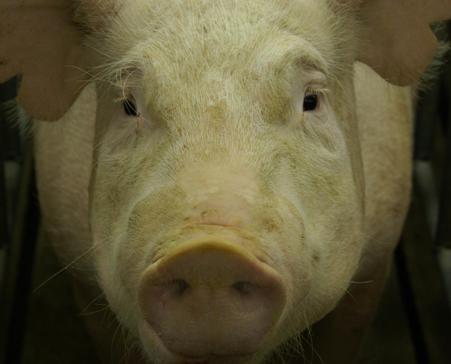Some lessons on autumn abortion syndrome

Urinary tract infections are present in sow farms at rates going from 17 to 45% and above. When vulvae discharges are seen, an elevated number of animals are already affected and some are irrecoverable. Insight into the problem – and its relation to climate – is one step on the way to prevention.
By Diego Padoan, DVM, Biomin, Italy
The well-known American author and journalist Hal Borland once wrote: “For the fall of the year is more than three months bounded by an equinox and a solstice. It is a summing up without the finality of years end.”
©
When reading this article, the hot summer on the northern hemisphere has already passed, crops have been harvested, some have still grapes to gather, but the general attitude is to slow toward winter. It is a favourable season for the animals; the air is comfortable and doesn’t need to be cooled or warmed, barn windows can be kept open day and night. Animal keeping appears easier, works run without pitching, only to put again in cycle the sows that failed during hot weather and that come to heat more often between 44 and 53 days.
©
During intermediate seasons it is always advisable to take special care of sows’ urinary tracts.
©
But this is really the season of summing, to remember to switch from summer feeding, otherwise lighter pigs are going to cost producers money. Some diseases, such as Porcine Reproductive and Respiratory Syndrome (PRRS) or Erysipelas, appear to be more aggressive, it is simply due to a little decrease in immune reaction that happens in this period, to temperature fluctuations that are dramatic in intermediate seasons, to changes in feeding and it is due to a shorter number of hours of daylight. In this period the stored feeds are nearly at an end, raw materials that stayed a yearlong, with all their charge of decay and mould contamination; those who have already started with newly harvested corn, sometimes still fermenting, should carry out chemical tests to know what is being fed to the animals, to know features, contaminants and mycotoxins, and use this experience through the next year.
©
AAS
In short, autumn is the moment of the so-called autumn abortion syndrome (AAS). Sows may abort normal foetuses from 30 to 110 days without signs of fever or toxemia. Well-known pig health authors M. Muirhead and T. Alexander consider that historically sows only produced one litter per year and there would be an in-built tendency not to maintain a pregnancy during the summer and autumn period, as in that time environmental factors are likely to cause the corpus luteum to disappear. Decline in blood progesterone during the autumn may be associated with a decline of daylight. Any factor causing an increase in levels of prostaglandins F2ά can be involved.
©
Seasonality of reproductive performance is evident and influenced by both environmental and management factors, and cannot be a genetically controlled trait. It is likely that many abortions occur without an infectious agent and there is an increased incidence from September to December. New or unknown pathogens are often called to be responsible (immune-depression, PRRS), serologic testing of affected sows fails to demonstrate a pathologic agent. The prevalence of undiagnosed abortions resulted in the common term of AAS. A combination of environmental (temperature in gestation facilities), nutritional (marginal energy intake), and managerial factors predispose or contribute to set the syndrome. That aside, the influence of holidays and local festivals on workers’ care for animals should never be underestimated.
©
Preparation
When considering autumn from this point of view, the words of Borland appear less cryptic. Wise sow keepers recover animals from summer stress and prepare them for the coming winter. During intermediate seasons it is always advisable to take special care of sows’ urinary tracts, rather than relying on medication, as some farmers and veterinarians like to do.
©
Physiology is made of a set of very well-balanced mechanisms. Extreme seasons such as winter, although mainly summer, are able to dramatically alter many equilibria and keep some body organs and apparatuses under critical situations. In order to help the sow emerge from the summer and face the new season in the best physical shape consequences should be avoided. All problems are to be faced step by step. A combination of enhanced physiology due to elevated temperatures, lack of perspiration in pigs, and, as is commonly seen, inadequate watering leads to urine concentration and pH growth well above basic level, up to pHs of 8 and more.
©
A situation that is easy for pathogenic bacteria to invade the urinary tract from the outside and grow quite comfortably, resulting often in cystitis and pyelonephritis, affections that are common in sows and often lead to genital infections; metritis and mastitis are almost guaranteed complications. This in turn, can lead to a lower fertility rate caused by an increase in stillbirths.
©
Acidification
Acidification of the sow gut is nowadays a common shared concept and presenting specific feed additives to sows may help to provide some positive effects. One feed additive, based on phosphoric acid and some supporting anions (Biomin® pHD, 0,5%) is able to acidify urine and blood to warranty Ca++ levels, allowing also to avoid an excess of calcium in the diet. It contains also cranberry extracts, present in human urinary tract drugs, whose flavonoids facilitate the prevention of adhesion of pathogenic bacteria to urinary tract mucosa and thus favouring the flushing effect of urine. This allows furthermore maintaining cleaner farrowing crates resulting in ©less spreading of e.g. E. coli or Streptococcus by the sows.
©
Autumn is a time of great changes in the farm, raw materials, animal physiology and so on, much more then spring; this is the main buoy turning of the year.
©
Source: Pig Progress Volume 25 nr©7











